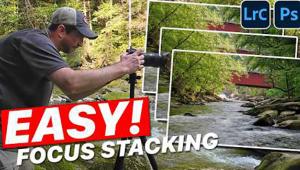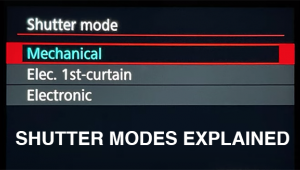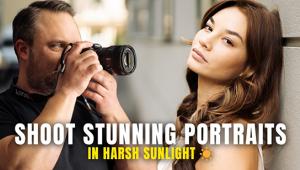Ask a Pro Photographer: Scott Kelby Answers Your Tough Photography Questions

Q. What is the difference between shooting with a straight-up monochrome camera, such as a Leica, and converting in post to a monochrome image? Also, what’s the difference between an in-camera monochrome image and converting to monochrome in post?
A. When you shoot an image that is already monochrome (it was shot “in camera” in black and white), you lose a lot of options when it comes to post-processing the image. Generally we much prefer to shoot in color and then be able to adjust those underlying colors to affect different parts of the photo. If you have Lightroom (or Camera Raw), give this a try: open a color image and then go to the B&W panel and convert to black and white. Even though the image is now black and white, see all those color sliders? Grab one and drag it back and forth and you’ll see it affects a particular range of tones in the image. Using color sliders to adjust different tones in your black-and-white image is a big advantage; there is actually more to this than I have room to go over in this column. Now, open a black-and-white image. If you opened an image already converted to black and white, you take away that easy ability to affect those regions. Hope that helps.
Q. I recently acquired a Nikon D850 DSLR. Although my current Mac mini can handle the individual picture files adequately, when I try to do focus stacking with 20 to 25 images it becomes painfully slow. I’m strongly considering getting an iMac with the large 27-inch screen. Do you think the iMac is a good choice for handling photography? If so, how would you equip the computer?
A. I think it’s an awesome choice, but I’m biased since my main photo computer at home is an iMac—I only have the 21.5-inch model, though. The iMac totally screams and I love it for photography work, so yes, I highly recommend it. I would make sure to get 16GB of RAM. There is no need to go overboard with the size of the internal hard drive, since you’ll probably (hopefully) be storing your images on an external drive anyway. That being said, whatever size internal hard drive you get, I would absolutely, positively go with SSD drives—the speed difference is pretty astounding, and it is one of the few upgrades that’s really worth the price.
Q. I purchased an Olympus Tough TG-5 to augment my usual cameras when boating. The camera is a comfortable size. However, I was quite surprised to see many of my images are compromised by significant chromatic aberration. The images are outlined by green, yellow, or other colors. This is caused, I assume, by the inability of the lens to focus all colors at the same point. Is there anything I can do to minimize this?
A. It is, as you duly noted, a lens problem and a very common one at that. Honestly, though, the fix is incredibly easy if you have either Lightroom or Photoshop, as both programs have excellent tools for removing chromatic aberrations. I call them “tools” but really it’s often as easy as just turning on the “Remove Chromatic Aberration” checkbox in the Lens Correction panel, or just dragging the Purple or Green amount sliders to remove the problem altogether. I made a little video to show you how it’s done and you can find it on Shutterbug’s YouTube channel. We've also embedded it below.
Q. With all of the changes currently taking place at Adobe, coupled with my fear that the current version of Lightroom for the desktop will be discontinued, I’m looking for alternatives. Lately I’ve noticed a lot of photographers mentioning Capture One by Phase One. Is this a viable alternative to Lightroom?
A. Phase One’s Capture One is actually a very solid program; it’s the king of the high-end fashion photography space. Overall, it’s a very powerful tool. For example, its color-grading capabilities are second to none and it’s probably the best program out there for shooting tethered. Not to mention, Phase One just introduced a new version, Capture One 11, that adds a bunch of new features and enhanced speed, so the program only keeps getting better. While Capture One is a solid alternative to Lightroom, there’s always a tradeoff. In this case, the tradeoffs include the price (Capture One is $299 or $20 per monthly subscription, and you’ll still need Photoshop); the learning curve, which is much higher than that of Lightroom; it’s not as robust as Lightroom as far as organization goes (its focus is on image capture and editing); and there’s not a giant community built around learning Capture One like there is for Lightroom, because there are only 90,000 users versus literally millions of Lightroom users. As for your fears, Lightroom “Classic” is going to be around for years, with more updates coming from Adobe to make it even better. Personally, I wouldn’t be jumping the ship just yet for something more expensive and more difficult, with less features, anytime soon. But that’s just my two cents.
Q. I’m still quite confused over Lightroom’s Classic Version CC. When I open Lightroom on my MacBook, the header page is saying that it’s Lightroom CC 2015 but the layout/features look like Lightroom Classic. What’s wrong?
A. Sounds like you just haven’t updated your version of Lightroom to Lightroom Classic yet—Lightroom CC 2015 is what was renamed “Lightroom Classic” in the most recent update. Do a search for “Creative Cloud” on your MacBook and launch that application. Once it launches, click on the Apps tab, and you’ll see “Lightroom Classic (formerly Lightroom CC) Desktop-focused editing” listed as one of the choices. Click the “Update” button to download this new update to Classic.
Scott Kelby is a photographer, Photoshop Guy, award-winning author of more than 50 books, and CEO of KelbyOne, an online education community dedicated to helping photographers take the kinds of images they’ve always dreamed of. You can learn more about Scott at his daily blog (scottkelby.com), or follow him on Twitter: @scottkelby.
Editor’s Note: Ask a Pro is a Q&A column from professional photographer, writer, and educator Scott Kelby. Scott is here to answer all your photography-related questions, so if you have something you’d like to know, e-mail him at editorial@shutterbug.com (with “For Scott Kelby” as the subject line) and your query could be featured in the next edition of Ask a Pro.

















































